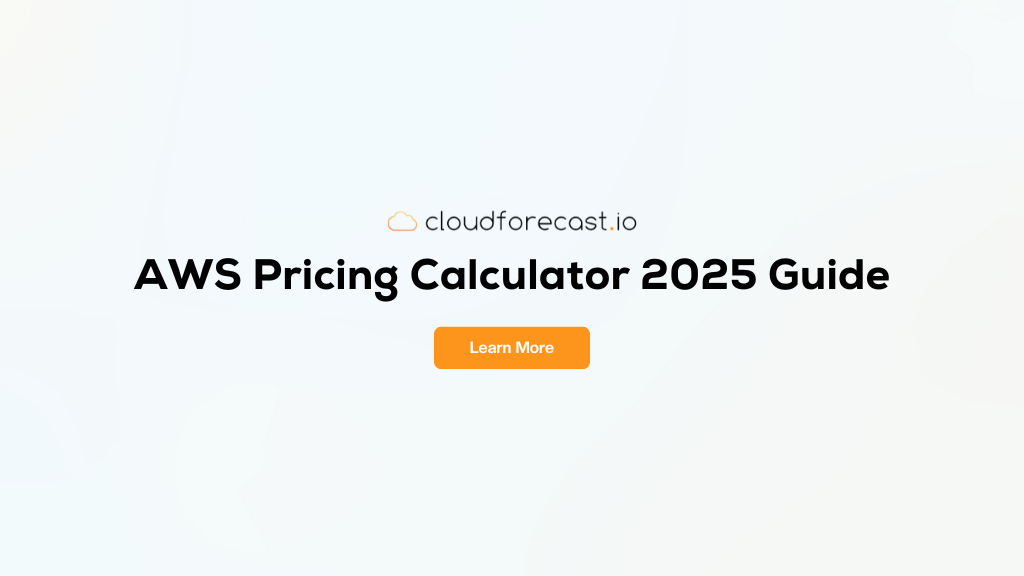Finance for Developers: What You Need to Know About AWS Costs

Anyone that reviews their credit card bill once a year knows how easy it is to accrue unused subscriptions when you don’t review your statement regularly. Many developers are guilty of the same thing when it comes to the cost of development tools or cloud infrastructure. It’s easy to spin up an instance for a project and forget to shut it down a couple of weeks later.
Many developers are also unfamiliar with how costs are handled from a business standpoint. Your company may have bought a new laptop for you for a lump sum cost, but those costs are typically spread out over the useful life of the laptop. After all, you don’t get all of the utility of owning a laptop in the first year—it’s valuable for a few years until it needs replacement.
Let’s take a look at some important financial concepts for developers to understand, how to track costs in Amazon AWS and strategies for building a cost-conscious culture.
Developers should understand amortization, accrual accounting, and other financial terms to better understand cloud costs.
Checklist of Ways to Lower Your AWS Costs
Download our free checklist of ways to lower your AWS costs.
Accrual vs. Cash Accounting
Suppose that you purchase a Reserved Instance for $600 and pay for it upfront for a maximum discount. If you wanted to know the monthly cost of running the application, you wouldn’t look at the first month that includes a one-time $600 charge. You also wouldn’t look at subsequent months that have no cost. You’d average the $600 over 12 months and assume $50 per month.
Amortizing is the process of distributing one-time costs across a billing period affected by that cost. That way, you can see your costs in accrual-based accounting with costs recorded as resources are used versus cash-based accounting where costs are reflected when paid. The result is a much more useful look at the real cost of cloud infrastructure.
The difference between cash and accrual accounting is more than just a convenient way to understand true cost—it’s a requirement for corporations (other than S-corporations) that average more than $25 million in gross receipts per year. Your organization’s CFO may have to understand amortized cloud costs.
Tracking Costs in AWS
The easiest way to track Amazon AWS costs is using AWS Cost and Usage Reports, which let you slice and dice cost data any way that you choose. In addition, you can visualize these costs in AWS Cost Explorer and configure AWS Budgets to monitor these costs over time. These are all great ways to ensure that you understand the true cost of cloud resources.
The most important AWS Cost and Usage Report columns to monitor include:

You can enable amortized cost in AWS Cost Explorer in a few steps:
- Sign in to the AWS Management Console and open the Billing and Cost Management Console.
- In the navigation pane, choose Cost Explorer.
- On the Cost Explorer page, choose Launch Cost Explorer.
- In the right pane, under Advanced Options, under Include costs related to, click Show amortized costs.
Selecting Show amortized costs break down the costs into the effective daily rate by amortizing your upfront and recurring reservation fees. For example, if you purchased a Partial Upfront t2.micro RI for one year for $30 upfront and a monthly fee of $2.48, AWS Cost Explorer should show a daily effective rate of $0.165 as the amortized cost.
AWS Budgets lets you go a step further and set up alerts for these costs:
- Sign in to the AWS Management Console and open the Billing and Cost Management Console.
- In the navigation pane, choose Budgets.
- At the top of the page, choose Create budget.
- For Select budget type, choose Cost budget.
- Choose Set up your budget.
- Move through the setup process.
- Under Budget parameters (optional), for Advanced options, choose Use amortized costs.
- Finish configuring the alert and save it.
Selecting “Use amortized costs” factors in the amortized cost of any reservation hours that you used, enabling you to build accurate AWS Budgets that incorporate Upfront or Partial Upfront reservations.
Reporting for the CFO
Amazon AWS and other cloud services are quickly becoming large line items in organizational budgets. As a result, it’s increasingly common for Chief Financial Officers (CFOs) or other C-level executives to require ongoing cost reporting. Developers or team leads may be responsible for preparing these reports that contain detailed cost reporting.

CloudForecast’s Monthly Financial Report – Source: CloudForecast
While it’s possible to prepare these reports using AWS Cost and Usage Reports, it’s much easier to use off-the-shelf tools like CloudForecast. Our Monthly Financial Report makes it quick and easy to report on costs to financial stakeholders with a high-level analysis and cost trends to answer any questions they might have about budgeting or forecasting. If you need help, we have prepared an AWS cost and usage report guideline here.
CloudForecast also makes it easy for developers and team leaders to keep on top of costs and maintain a cost-conscious culture. For example, you can access weekly AWS RI Reports that show underutilized RIs, missing savings opportunities and upcoming expirations, as well as alerts when costs are experiencing an abnormal increase.
Start your free CloudForecast trial today!
The Bottom Line
Developers should have a basic understanding of how businesses account for cloud infrastructure costs. In doing so, it helps them become more cognizant of their own spending and analyze costs in more accurate ways. They can also prepare more insightful reports for C-level executives and other finance team members.
CloudForecast makes it easy for technical teams to stay on top of AWS costs and business teams to access the information they need. Try it out today for free!
Manage, track, and report your AWS spending in seconds — not hours
CloudForecast’s focused daily AWS cost monitoring reports to help busy engineering teams understand their AWS costs, rapidly respond to any overspends, and promote opportunities to save costs.
Monitor & Manage AWS Cost in Seconds — Not Hours
CloudForecast makes the tedious work of AWS cost monitoring less tedious.
AWS cost management is easy with CloudForecast
We would love to learn more about the problems you are facing around AWS cost. Connect with us directly and we’ll schedule a time to chat!






